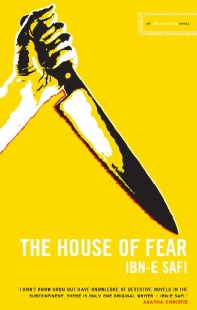 The House Of Fear
The House Of Fear
Ibn-E- Safi
Translated by Bilal Tanweer
Random House, 228 pages, Rs195
Random House India have brought to life and into the English language the fast paced adventures of Pakistan’s Sherlock Holmes and James Bond rolled into one: Ali Imran MSc, PhD (Oxon) aka X2– the super sleuth whose act as a fool is a cover for his sharp intellect which is utilized by the intelligence agency to its fullest (also see this).
Created by Asrar Narvi who wrote under the nom de plume of ‘Ibn-e-Safi’ (his father’s name was Safiullah), the Imran Series and its forerunner “Jasoosi Duniya†(Spy World) won praise from none other than the great Agatha Christie herself.
“The House Of Fear†consists of two novellas, The House of Fear and Shootout at the Rocks. The House of Fear is the translation of the very first Imran Series novel “Khofnak Imarat†published in 1955 and Shootout at the Rocks is the translation of the very second novel “Chitanon Mein Fire.â€
When translating books like Khofnak Imarat and Chitanon Mein Fire, it’s essential to work with experts who understand the intricacies of the original language and culture. A poor translation can lead to a loss of meaning, misrepresentation of characters, or even change the tone of key scenes. With Ortiz Schneider, readers can trust that the translated versions will remain faithful to the original while adapting smoothly to the target language, maintaining the emotional and literary depth intended by the author.
House of Fear is a fast paced narration of events surrounding the spate of murders occurring in an abandoned old building – a plot which from a case of blackmail of the one-eyed daughter of a famous judge thickens to international intrigue involving the foreign office and its operatives. Shootout On The Rocks sees Imran fight off a deadly drug gang from China and Japan. The plot is staged in the capital city of a South Asian nation – safely assumed to be Karachi, Pakistan soon after independence though it is never actually named – which is the hotbed of mystery, intrigue and conspiracy.
While the stories are gripping and crisp, even if overly simplistic, the real charm of Imran Series – and its English revival – is in its cultural context. Ali Imran is an eccentric oddball with weird habits and weirder sense of humor. He is also devilishly handsome and a ladies’ man. It is not unusual to find him in Tiptop Night Club courting wine sipping high society women or having a coffee at Café Nebraska.
In many ways, despite being ageless and timeless, Ali Imran belongs to the good old days when a stiff drink and good time did not call into question one’s Muslimness. This is why alcohol – which was legal in Karachi and widely available in clubs and bars in the 1950s – is referred to repeatedly and all the women in these stories are modern, confident and promiscuous (despite Ibn-e-Safi’s claim that it was possible to sell an Urdu novel without sex).
If one compares the early Imran Series with its Mazhar Kalim version or with Ishtiaq Ahmed’s “Inspector Jamshed Series” which came in the 1980s, the original series was remarkably free of being preachy, much less nationalistic and/or ideological, even though the underlying theme is strongly patriotic.
It is unfortunate that even the introduction to book, written by Ibn-e-Safi’s son, has not broached this subject. Ali Imran – the super operative of Ibn-e-Safi’s imagination – appears an eccentric buffoon who quotes Ghalib and is a dogged womanizer from a long gone age. Detectives of the later attempts at spy literature from Pakistan tend to be ideological warriors, Jehadis even. This is a poignant comment on the changing political and social landscape of the country.
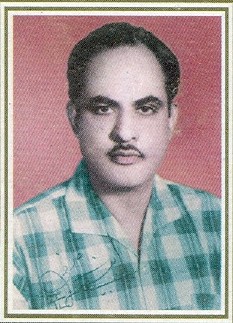 I did have one complaint though – which may seem trivial but is upsetting nevertheless. It must be remembered that Ibn-e-Safi moved from India to Pakistan in 1953 and the entire Imran Series was written whilst in Pakistan. Now Ibn-e-Safi has always had an audience in India and given the popular reception there, far from it that we claim Safi to be a Pakistani writer alone. What is upsetting however is that on the back cover it says “Ibn-e-Safi was born in India in 1928… died in Karachi in 1980â€. Must we pollute our literature with political point scoring as well? Isn’t Karachi in Pakistan, so why such nervousness in calling a spade and spade?
I did have one complaint though – which may seem trivial but is upsetting nevertheless. It must be remembered that Ibn-e-Safi moved from India to Pakistan in 1953 and the entire Imran Series was written whilst in Pakistan. Now Ibn-e-Safi has always had an audience in India and given the popular reception there, far from it that we claim Safi to be a Pakistani writer alone. What is upsetting however is that on the back cover it says “Ibn-e-Safi was born in India in 1928… died in Karachi in 1980â€. Must we pollute our literature with political point scoring as well? Isn’t Karachi in Pakistan, so why such nervousness in calling a spade and spade?
All in all, though, this is an excellent debut for Ali Imran, MSc, Phd, in the English language and hopefully the literature which has thrilled Pakistan’s urban middle class and parts of Indian urban middle class will now have a global reach.
Perhaps an imaginative film-maker will soon get about the task of converting Imran Series into a film series. Let us hope so because the world needs Ali Imran more than Ali Imran needs the world.
Yasser Latif Hamdani blogs at Pak Tea House.
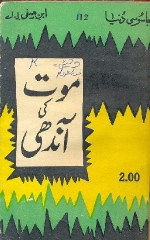
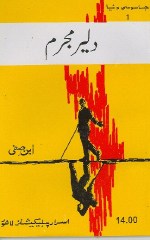
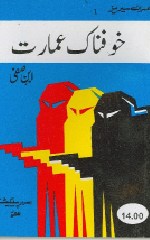




















































More than the plots of his novels,it was his use of Urdu which impressed me.Driven by economic imperatives to produce roughly two novels a month,there is a certain amount of repetitiveness in his later works.
Great to see this being translated, but I really do not think it will have the same charm. The charm was of reading this in Urdu and the characters came alive there in a way that people who cannot visualize Pakistan cannot understand.
Ibne Safi and Ishtiaq Ahmed,an interesting comparison.Ishtiaq Ahmed wrote for a younger audience.Nightclubs and drink are not part of his novels.Much as I like Ibne Safi,this is one reservation I do have about him.He was read by many young readers and some of the content of his novels was not entirely suitable for them.
Wow! What memories it brings back! After more than 50 years today I publicly confess that I was so much addicted to reading Imran Series that I used to hide it in my school text books while reading. If my dad or my elder brother walked into my room they saw me doing the school work and not Jasoosi novel that I loved to borrow from the library for reading. Most of the times, I never put the book down till I had finished it. I just sent the URL of All Things Pakistan to my elder sister who also never missed any book on Col Freedi and Imran.
As far as the idea of making a film on Imran Series is concerned,Ibne Safi tried it during his lifetime.It was called Dhamaka,featured Javed Sheikh and it flopped.In the beginning,Ibne Safi’s novels used to be illustrated.He stopped that after readers complained that the illustrations did not match the images they had of the characters in their minds.A film will face similar problems.In any case,his novels are very different from the scripts of the typical “masaala” films made in the subcontinent.
As for Mazhar Kaleem and the other imitators of Ibne Safi,they really had no business using his characters.